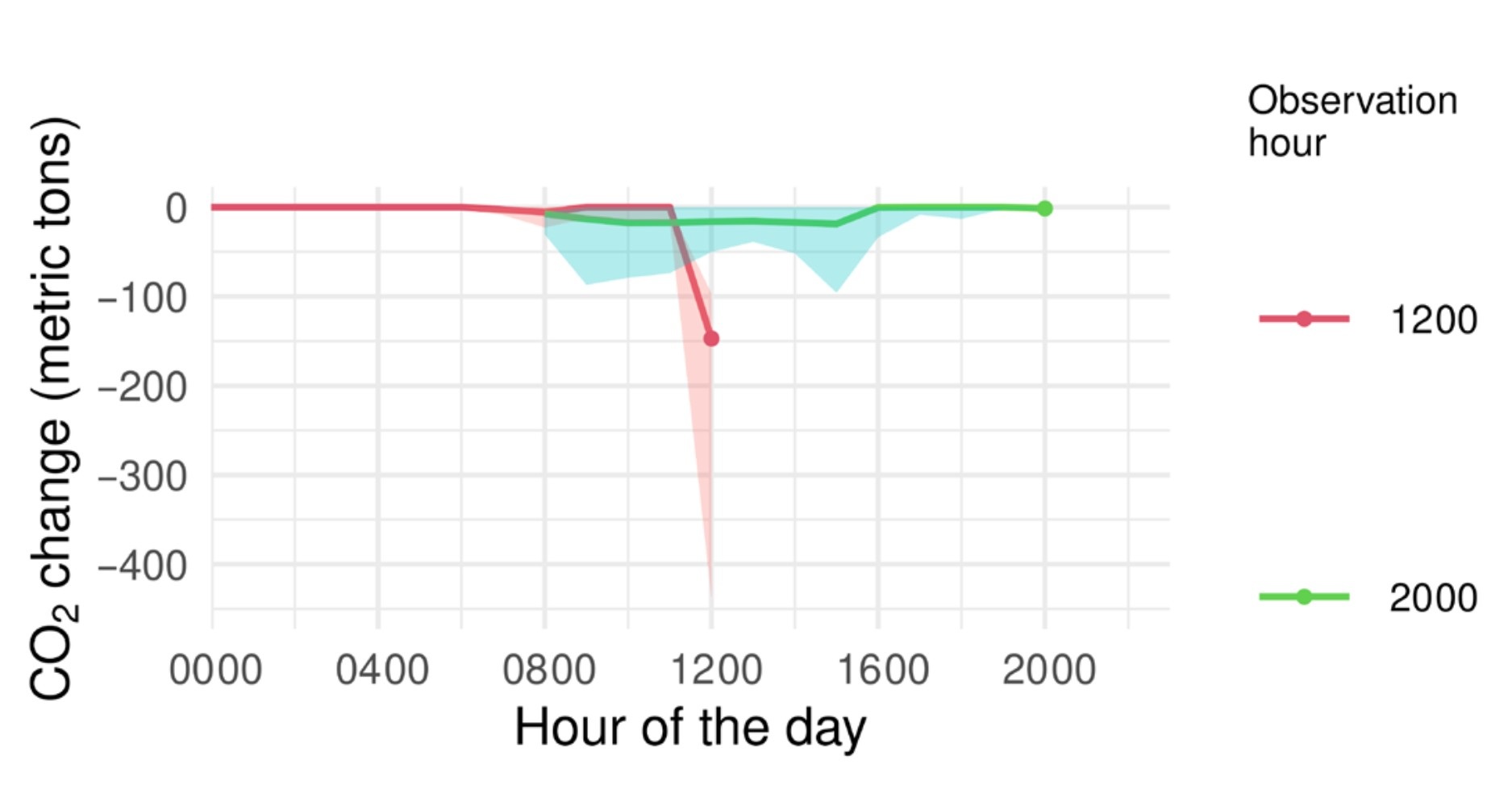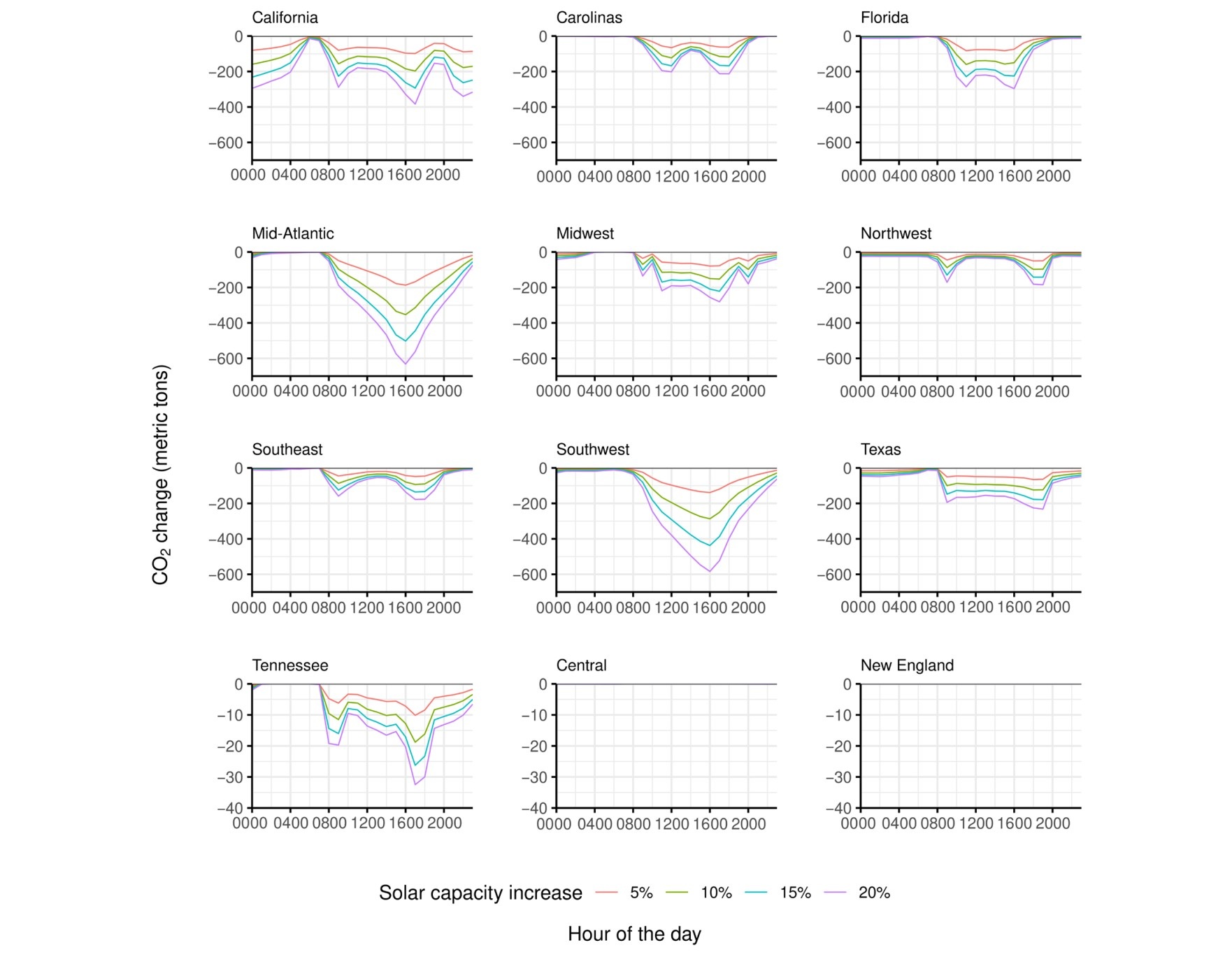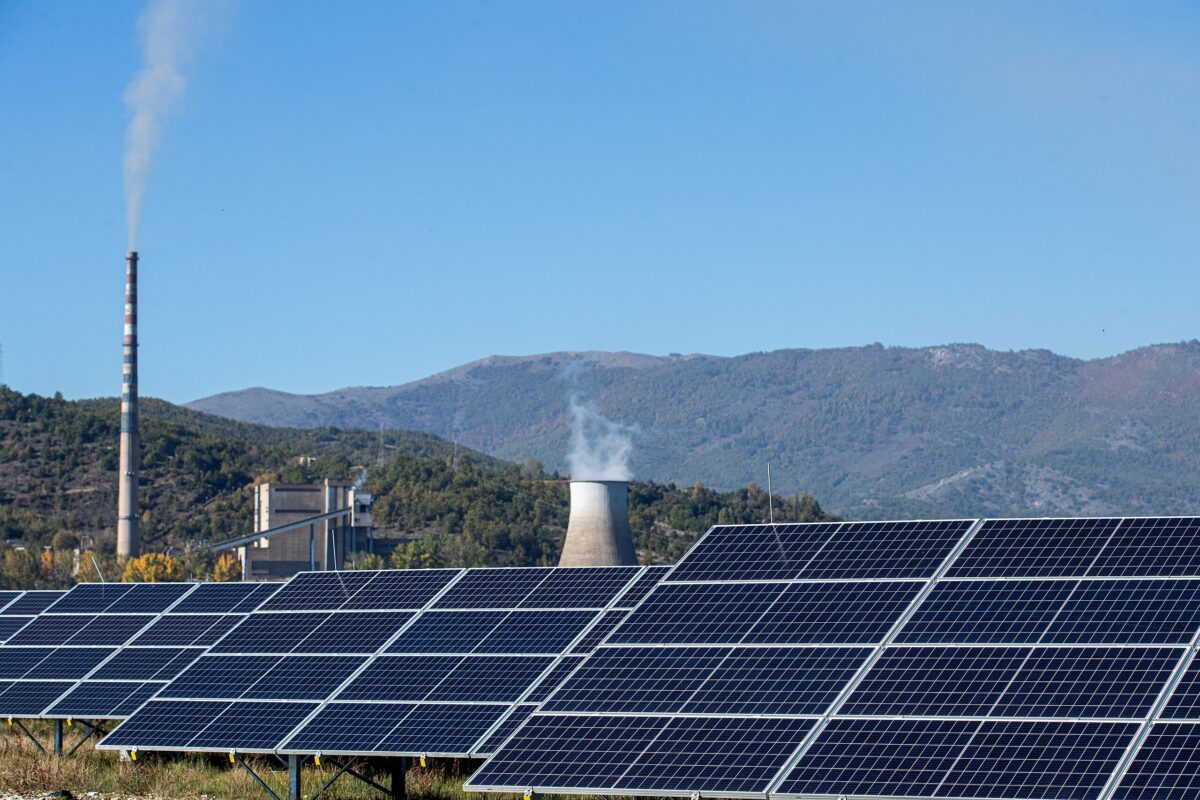A paper published in Science Advances, Quantifying effects of solar power adoption on CO₂ emissions reduction, confirms what many in the industry have long suspected: if the fundamental environmental mission is to reduce emissions, expanding solar power is a well-documented path forward. The researchers found that a 15 percent increase in solar generation (an annual growth rate the industry has maintained for the past decade) in the analyzed time windows was responsible, by itself, for achieving 12 percent of the United States’ annual emissions reduction target set by the EPA.
Unlike older models that assume solar generation directly displaces fossil fuels, this study used a more nuanced statistical approach. The analysis considered both immediate and time-delayed effects of solar generation and emphasized regional differences in how solar adoption reduces CO₂ emissions. Researchers examined five years of hourly grid data across 12 U.S. regions.
The study explored how annual CO₂ emissions change when solar generation increases by 5, 10, 15, and 20 percent. Due to regional variation, the authors found that although a 15 percent increase could theoretically reduce emissions by 21.07 MMT per year, the real-world estimate was closer to 8.54 MMT.

Image: Science
Still, that 15 percent increase, which has occurred consistently over the past decade, accounts for more than 12 percent of the U.S. Environmental Protection Agency’s (EPA) annual emissions reduction target of 69 MMT. That target is part of the broader EPA goal to cut 1,380 MMT of CO₂ over 20 years.
Notably, solar power has grown by more than 15 percent annually since 2014.
However, not all regions benefit equally. California, Texas, the Midwest, the Southwest, Florida, and the Mid-Atlantic showed the strongest reductions in CO₂ emissions as solar generation increased. By contrast, regions such as New England, Tennessee, and the Central U.S. showed little or no measurable effect, even with a 20 percent rise in solar generation.
These cases, however, reveal more about the dataset’s noted limitations than about solar’s effectiveness.
In New England, most solar capacity is distributed across rooftops and smaller systems. As a result, that generation is largely absent from the utility-scale data the researchers relied on. California also has substantial distributed solar, though its utility-scale contribution was large enough to dominate the dataset. The lack of measurable impact in New England is therefore a data artifact, not a true reflection of solar’s value. And at the national level, data complexities like this are to be expected.

In Central Tennessee, which is managed by the Tennessee Valley Authority, the story is different. This area is already powered primarily by hydroelectric and nuclear power. With limited fossil generation in the mix, there is simply less CO₂ to displace. Solar may still offer benefits in this region, but its emissions-reduction potential is understandably smaller.
Despite these regional quirks, the broad takeaway is clear: solar lowers emissions.
The research team, made up of experts from Rutgers, Stony Brook, Harvard, and Dana-Farber Cancer Institute, found an additional system-wide benefit tied to solar. They found that solar lowers emissions both where it is installed and in neighboring regions through electricity exports. They wrote:
We estimate that a 15% increase in solar capacity in California is associated with a total reduction of 913 and 1,942 metric tons of CO₂ emissions per day in the Northwest and Southwest regions, respectively. Therefore, increasing solar power generation in a region not only helps in the reduction of CO₂ emissions from the electricity sector within the region but also has an impact on the neighboring regions.
The study also supports a growing realization that solar exports reduce emissions beyond the point of generation. While headlines often focus on curtailment or overproduction in places like California or Germany, this work suggests that more attention should be paid to the emissions being avoided across state or national lines due to that surplus. Rather than viewing curtailment purely as wasted energy, the study reinforces that solar continues to deliver emissions reductions, even when partially curtailed or exported to neighboring grids.
The paper also examined delayed emissions reductions made possible by battery storage. In California, where large-scale storage systems have been widely deployed, solar produced in the middle of the day can now displace fossil fuel generation during the evening demand peak. The researchers modeled these time-lagged effects, showing how solar can reduce emissions four to twelve hours after it is generated.
This content is protected by copyright and may not be reused. If you want to cooperate with us and would like to reuse some of our content, please contact: editors@pv-magazine.com.








This article lays out a very powerful and practical argument for solar energy being the undeniable front-runner in our immediate mission to reduce carbon emissions. Seeing its dramatic cost reduction and speed of deployment really does put its potential into a clear perspective, especially when weighed against more nascent technologies.
It makes me wonder though, beyond its incredibly clean energy generation, what are some of the most pressing challenges we face regarding the solar industry’s long-term circular economy? Specifically, how do we effectively manage comprehensive panel recycling strategies as they inevitably reach end-of-life on such a vast global scale down the road? Also, for long-term grid stability almost entirely based on highly variable solar, what further innovations, perhaps even beyond battery solutions, in transmission or ultra-long duration energy storage might be absolutely crucial to ensure reliability every moment, everywhere?